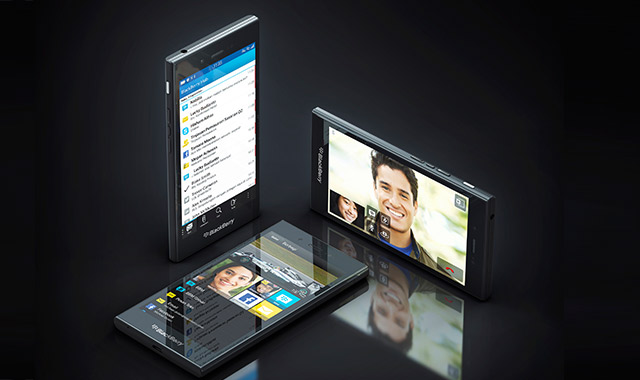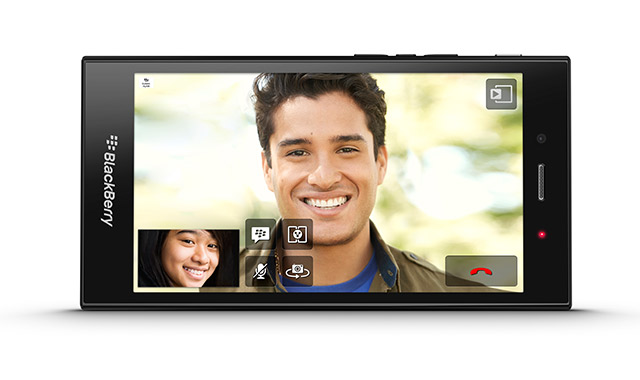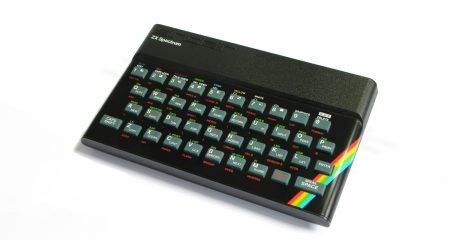
The Z3, the latest smartphone from BlackBerry was built for Indonesia, one of the markets where the Canadian firm is still strong. It’s now been launched in South Africa, only the second country to get it — a move that local BlackBerry MD Yudi Moodley says was a logical next step.
The Z3 is a smart looking device that resembles the new design that BlackBerry adopted with its Z10 and Z30 phones. It’s the first phone based on the BlackBerry 10 operating system that is targeted at a mass market.
At a recommended price of R3 000 — expect to get it cheaper than that — BlackBerry is hoping to entice a new generation of smartphone user while ensuring long-time fans of the platform, those on older Bold and Curve phones, have an upgrade path.
For the price, users get a reasonable performance smartphone with most of the features that one could want on a large-screen device. The Z3’s 5-inch screen displays a resolution of 960×540 pixels for a pixel density of 220ppi. It’s not the best on the market, but then this isn’t a high-end phone.
There is a 5-megapixel rear camera that delivers good, but not superb, photos, while the front-facing 1,1-megapixel camera does the job for video calls and “selfies”. Although the 8GB of internal storage is the bare minimum one should expect, there is a microSD card slot to add up to 32GB of additional capacity for all those selfies and other pictures.
As is to be expected from a device that targets the price-conscious market, the Z3 features an entry-level Snapdragon 400 dual-core 1,2Ghz processor with 1,5GB of RAM. Real-world performance on the Z3 was not as bad as we expected it would be and the phone felt quick enough for most tasks that we threw at it.
The battery life of the Z3 is also on par with most phones of this calibre. From a full charge, the 2 500mAh non-removable battery delivers about a day’s worth of average use. Playing games and videos naturally decreases battery life.

The Z3 runs the latest version of BlackBerry 10 — version 10.2.1 — the same version that also allows users to load Android applications.
With the BlackBerry Hub, the cornerstone of BB10, BlackBerry has reaffirmed its focus on building communications devices. The Hub is a message and notification aggregator that brings the user’s favourite social networks and messaging tools together in one convenient place.
One of the first questions that gets asked by users of older BlackBerry devices is about the quality of the new, touch-screen driven phones’ onscreen keyboard. While the Z3 offers nowhere near the same experience as BlackBerry’s old-school physical keyboards, it works well enough compared to other smartphones and has a few tricks up its sleeve to help you type faster. The keyboard is able to learn which words you use and how you use them. Users can even type in up to three different languages at the same time. Predicted words appear in-line and with a simple swipe up, the chosen word is inserted where you are typing. With some practice, this feature makes typing quick and easy.
One of the most significant features introduced with a recent update to B10 is the ability for users to install and run Android apps. This should go a long way to addressing the lack of natively development BB10 apps.
However, users must for now still manually install the Amazon Appstore from the e-retailer’s mobile site. The next version of the operating system will preload the Appstore. Running Android apps on the Z3 proved easy enough and, although there is a slight performance hit when running some of them, most users would not notice the slight lag that comes with processor-intensive applications.

Long time BlackBerry users should also note that BIS is no longer available with BB10-powered devices. Instead, they’ll have to make use of a number of deals that has been arranged with network operators, including zero-rated BlackBerry Messenger and additional data bundles that can be bolted onto prepaid packages.
As in Indonesia, the Z3 should prove popular among the BlackBerry faithful. It’s a good-looking phone that works really well for most tasks.
For the price, there are only a handful of competing smartphones that offer the same specifications and features — most notably, perhaps, is the latest Nokia Lumia 630, which retails for about R1 000 less and, although not directly comparable in terms of each bit of hardware, its a good contender in the prepaid market segment.
The BlackBerry Z3 will be available on Vodacom’s Smart S plan at R249/month from mid-July, offering 75 minutes of talktime and 200MB of data plus 20 apps from the BlackBerry World store worth R430. The Z3 will come to other South African network operators next month. — © 2014 NewsCentral Media




